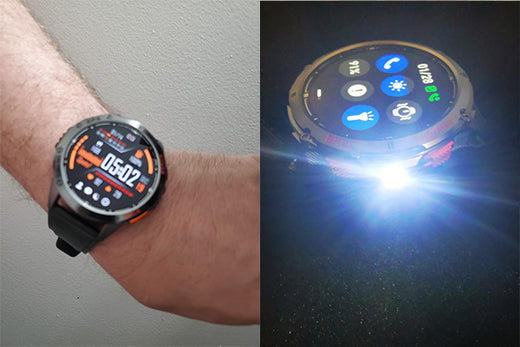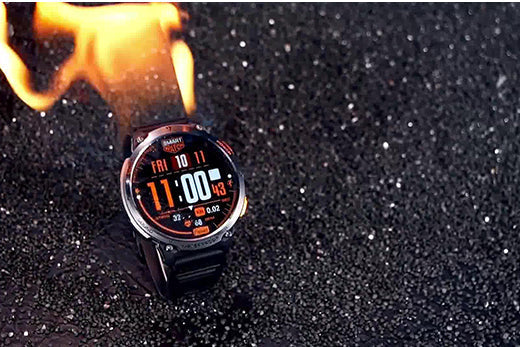I remember the first time I saw a paramedic tap their wrist, not to check the time—but to scan a patient’s pulse reading and radio it in. That moment stuck with me. It was quiet, fast, and effective. No drama, just efficiency. Since then, I’ve paid attention to how wearables are transforming frontline work.
We don’t often associate smartwatches with life-or-death scenarios. But maybe we should.
What Sets Tactical Smartwatches Apart?
Forget sleek designer models. The devices worn by those in law enforcement, emergency medical teams, and the armed forces are built for something else entirely.
Let’s break it down:
-
Built like a tank: These watches laugh in the face of dirt, heat, freezing rain, or a fall onto concrete.
-
Offline GPS: You can navigate through a blackout or a forest where your phone’s just dead weight.
-
Health under pressure: Continuous heart rate, O2 saturation, even stress levels—right on the wrist.
-
Battery for days: Literally. Some stretch beyond a week with regular use.
-
Discrete alerts: Vibration and silent notifications—no bright lights or loud dings.
That’s the baseline. On a good day. On a bad day? These features save time and lives.
For Police Officers: Quiet Efficiency on the Beat
If you’ve ever ridden along during a night patrol, you know how unpredictable a shift can be. A smartwatch won’t prevent chaos, but it can help manage it.
-
Stealth notifications mean you stay aware without broadcasting it to the entire street.
-
On-wrist flashlight gets you through power outages or unlit stairwells without fumbling.
-
Quick calling lets you contact backup or dispatch while both hands are occupied.
-
Stress monitoring actually does more than you'd think—it can flag moments of danger before you consciously notice them.
In Combat Zones: What Soldiers Actually Use
If there’s one thing military life teaches you, it’s that your gear can’t quit before you do.
Tactical smartwatches help with:
-
Route tracking for missions in unfamiliar areas
-
Compass and barometer tools when traditional navigation is offline
-
Low profile: The good ones don’t flash, beep, or scream “I'm here!”
-
Weeks-long battery to match the mission length
And when you're halfway up a mountain or on patrol in the desert, you don’t want an app crashing on you.
EMTs and Firefighters: Wearables That Keep Up
Emergency responders don’t sit behind desks. They move fast, lift patients, brave floods and fires. That means their tools—especially the ones worn—have to move and survive with them.
Why they’re choosing tactical smartwatches:
-
Quick vitals access: Instant pulse, oxygen levels, and stress readouts can help triage a scene
-
Durability: Heat, water, drops—it’s all part of the job
-
Real-time navigation: Especially vital when seconds count
-
Fatigue tracking: Helps spot burnout patterns that compromise response time
Spotlight: Mingdaln K68 – Affordable, Tough, and Reliable
Let’s be honest—some watches cost more than a decent rifle scope. That’s where the Mingdaln K68 enters the chat. It’s affordable, rugged, and practical.
What it brings to the field:
-
IP68 waterproofing, dustproofing, and shock resistance
-
A 1.85” AMOLED screen that’s still readable in full sunlight
-
Bluetooth calling functionality
-
Heart rate, SpO2, sleep tracking 24/7
-
Built-in flashlight and compass
-
Battery life that goes up to two weeks on regular use
It’s not trying to replace a Garmin Tactix, but for under $100, it’s surprisingly well-equipped.
At a Glance: Compare the Options
| Feature | Mingdaln K68 | Garmin Tactix 7 | Suunto Traverse Alpha |
|---|---|---|---|
| Durability | IP68 Rated | MIL-STD-810 Certified | MIL-STD-810 Certified |
| Navigation | Compass Only | Multi-GNSS + Maps | GPS + GLONASS |
| Battery Life | 7–14 Days | 28–50 Hours GPS | Up to 14 Days |
| Stealth Mode | Partial | Full | Full |
| Price Range | ~$89.99 | ~$1,099 | ~$349 |
Conclusion
The next time you see a firefighter, a soldier, or a paramedic, take a glance at their wrist. That device isn’t just counting steps. It’s guiding them through blackouts, helping coordinate backup, and sometimes giving the only vitals that matter.
Smartwatches in the tactical world aren’t about luxury. They’re about trust.
And when trust matters most—whether it’s in warzones, wildfires, or the back of an ambulance—a rugged smartwatch is more than tech. It’s part of the uniform.
FAQs
Q: Are tactical smartwatches compatible with body cameras or field systems?
A: Some models pair via Bluetooth or app-based integrations, though compatibility varies.
Q: Will they fit under tactical gloves or uniforms?
A: Yes—most designs favor large screens, strong contrast, and glove-friendly buttons.
Q: Can they handle indoor GPS blind spots?
A: Higher-end units offer multi-band satellite support, improving signal in urban or covered environments.
Q: Do you need a phone for them to work?
A: Not necessarily. While some features need syncing, key functions like navigation and health tracking are standalone






Leave a comment
This site is protected by hCaptcha and the hCaptcha Privacy Policy and Terms of Service apply.